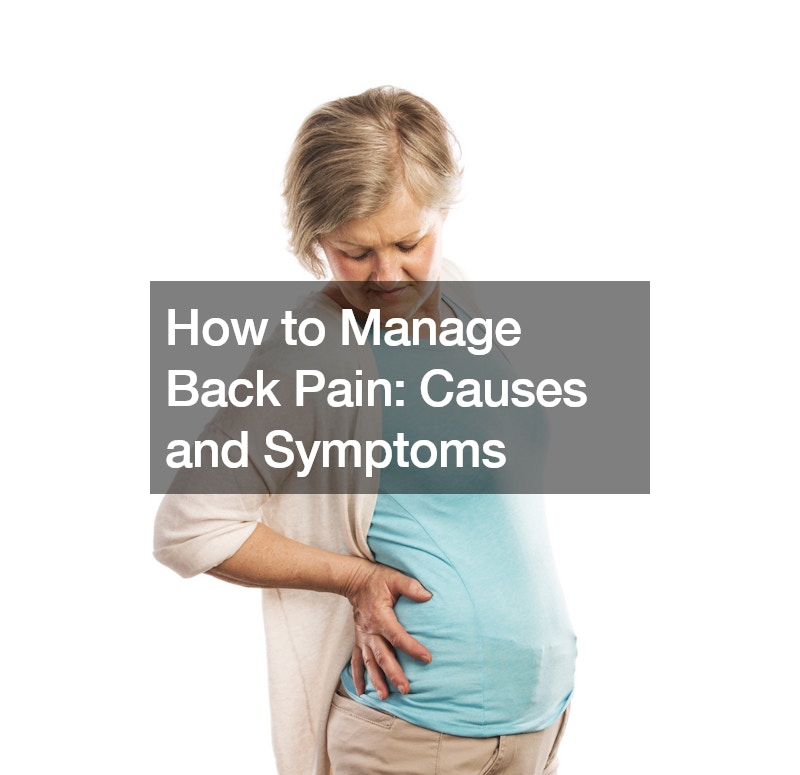

Back pain is a pervasive health issue affecting millions of individuals worldwide, with varying degrees of severity and impact on daily life. Understanding the causes and symptoms of back pain is crucial for effective management and improving overall well-being. In this comprehensive guide, we explore the multifaceted nature of back pain, delve into its underlying causes, and discuss strategies for effective management, including chronic pain management treatments.
The Prevalence of Back Pain:
Back pain is one of the most common medical complaints globally, with around four out of every five individuals experiencing it at some point in their lives. This widespread prevalence underscores the importance of addressing back pain comprehensively and proactively to mitigate its impact on individuals’ quality of life.
Causes of Back Pain:
Back pain can stem from various sources, broadly categorized as musculoskeletal or pathological. Musculoskeletal causes often involve strains, injuries, or structural abnormalities affecting the muscles, ligaments, discs, or joints in the back. While musculoskeletal back pain is the most common and typically resolves with conservative management, pathological causes, such as infections, cancer, fractures, autoimmune conditions, and nerve damage, require specialized attention and treatment.
Identifying Symptoms:
Recognizing the symptoms associated with back pain is essential for early intervention and appropriate management. Common symptoms include:
- Localized or radiating pain in the lower back
- Stiffness or reduced mobility in the back
- Difficulty standing, walking, or performing daily activities
- Numbness or tingling sensations in the legs or feet
- Weakness in leg muscles
- Pain exacerbated by certain movements or positions
Warning Signs:
While most cases of back pain are benign, certain warning signs may indicate a more serious underlying condition requiring medical attention. These include:
- Chronic pain lasting beyond six weeks
- Progressive escalation in pain severity
- Fever or night sweats accompanying back pain
- New-onset back pain in individuals over 50
- Unexplained weight loss
- Severe spine stiffness
- Evidence of nerve injury, such as urinary incontinence or leg weakness
Effective Management Strategies:
Managing back pain involves a comprehensive approach tailored to the individual’s specific needs and underlying causes. Some effective management strategies include:
- Physical therapy to improve strength, flexibility, and posture
- Non-pharmacological interventions such as heat or ice therapy, massage, and acupuncture
- Medications for pain relief, inflammation reduction, or muscle relaxation
- Chronic pain management treatments for persistent or recurrent pain
- Lifestyle modifications, including regular exercise, proper ergonomics, and weight management
- Psychological counseling or cognitive-behavioral therapy to address emotional distress and pain-related anxiety
Preventive Measures:
While not all instances of back pain can be prevented, adopting healthy lifestyle habits and ergonomic practices can help reduce the risk of developing or exacerbating back pain. These measures include:
- Maintaining a healthy weight and engaging in regular exercise
- Practicing good posture, especially when sitting or standing for prolonged periods
- Lifting heavy objects properly, using the legs rather than the back
- Using supportive furniture and ergonomic tools
- Staying hydrated and consuming a balanced diet rich in nutrients
- Taking regular breaks from sedentary activities to stretch and move
Mind-Body Approaches for Back Pain Management
Chronic back pain is not only physically debilitating but can also take a toll on one’s mental and emotional well-being. Mind-body approaches offer holistic strategies that address both the physical discomfort and the psychological distress associated with back pain. These techniques leverage the connection between the mind and body to promote healing, relaxation, and overall well-being.
Mindfulness meditation is one such approach that teaches individuals to cultivate present-moment awareness without judgment. By focusing on the breath and sensations in the body, mindfulness meditation can help reduce stress, anxiety, and depressive symptoms often exacerbated by chronic pain. Studies have shown that regular practice of mindfulness meditation can lead to improvements in pain tolerance, coping skills, and overall quality of life for individuals with chronic back pain.
Yoga combines physical postures, breathwork, and meditation to promote flexibility, strength, and relaxation. Specific yoga poses target areas of tension and discomfort in the back, helping to alleviate pain and improve mobility. Additionally, the emphasis on mindfulness and breath awareness in yoga can help individuals develop greater body awareness and cultivate a sense of calm amidst pain flare-ups.
Tai chi is another mind-body practice that involves gentle, flowing movements coordinated with deep breathing and mental focus. This ancient Chinese martial art has been shown to reduce pain, improve balance, and enhance overall physical function in individuals with chronic back pain. Tai chi’s slow, deliberate movements encourage relaxation and promote a sense of inner peace, making it particularly beneficial for managing stress-related back pain.
Conclusion:
Back pain is a complex and multifaceted condition that can significantly impact individuals’ physical and emotional well-being. By understanding its causes, recognizing symptoms, and implementing appropriate management strategies, individuals can effectively manage back pain and improve their overall quality of life. Remember, early intervention and proactive care are key to alleviating discomfort and promoting long-term spinal health.
Don’t let back pain dictate your life, take charge of your health and well-being today.
.
